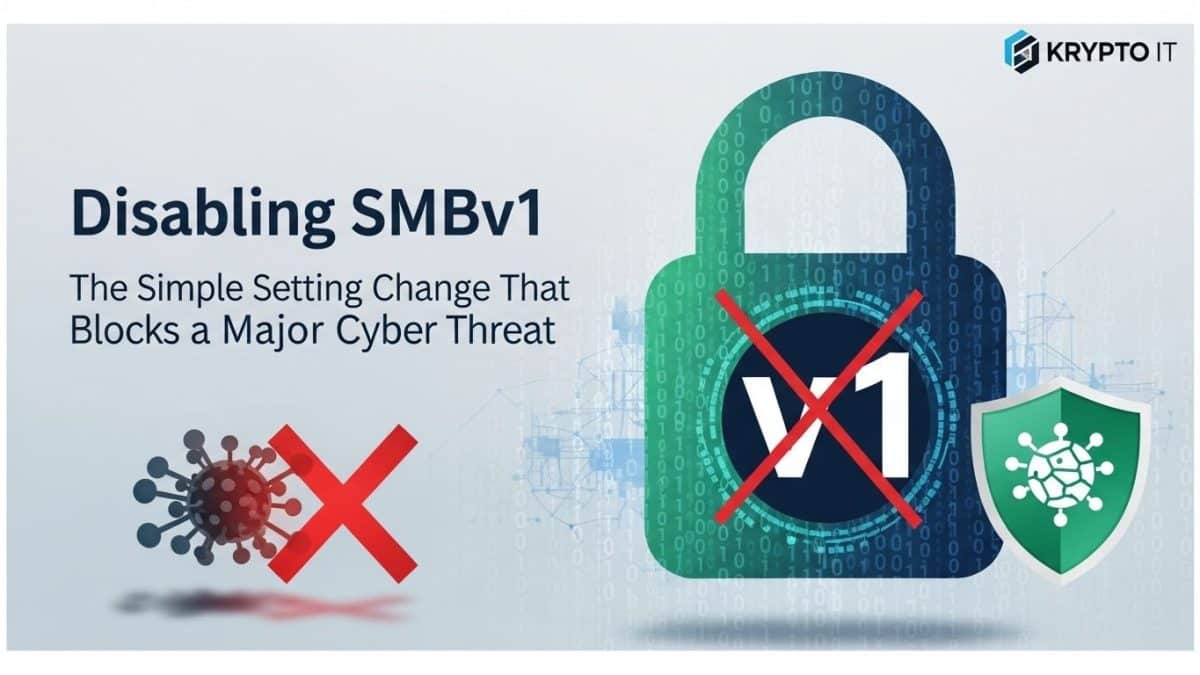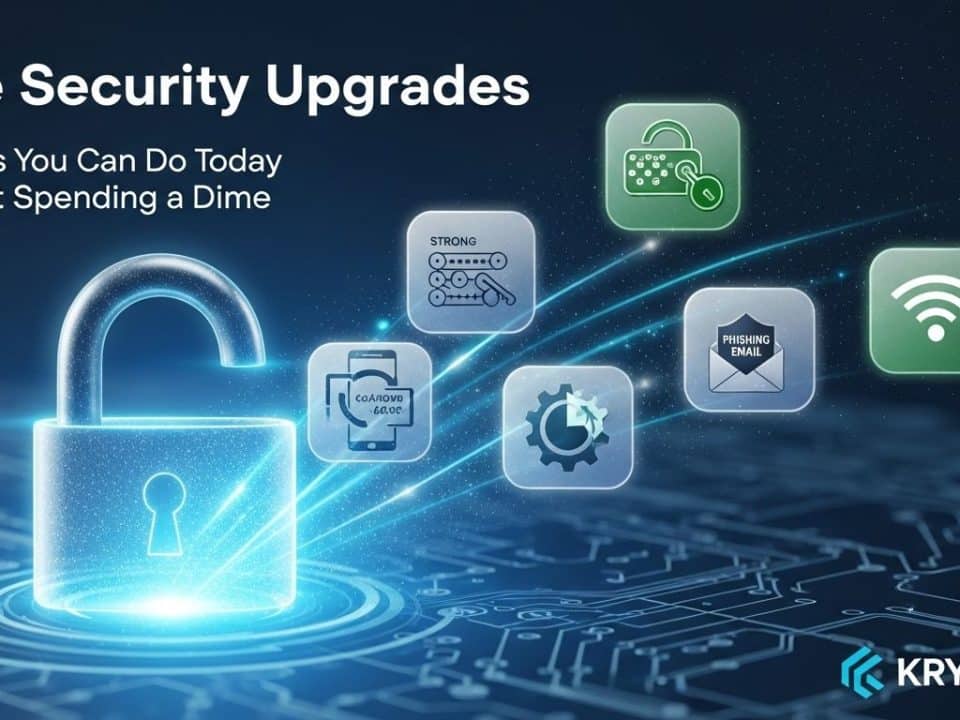
Network Segmentation: The Digital Walls That Protect Your SMB From Total Breach
November 8, 2025
The “Break Glass” File: Creating an Incident Response Plan You Can Actually Use
November 11, 2025By the Team at Krypto IT | Cybersecurity Experts Serving Houston SMBs
For small to medium-sized businesses (SMBs), cybersecurity often focuses on the latest, most sophisticated threats: AI-powered phishing, zero-day ransomware, and complex nation-state attacks. But sometimes, the biggest risks lurk in the oldest, dustiest corners of your network—in technologies that should have been retired a decade ago.
One of the most dangerous, lingering security weaknesses on many SMB networks is a decades-old protocol known as SMBv1 (Server Message Block, Version 1). It’s obsolete, notoriously insecure, and yet, it is often still enabled on company computers and servers, silently leaving a massive, open door for some of the world’s most devastating cyberattacks.
Disabling this one setting is arguably the single simplest and most effective step you can take today to block a major attack vector.
What Exactly Is SMBv1 and Why Is It Still Running?
Server Message Block (SMB) is the backbone protocol that Microsoft Windows uses to allow computers to communicate, share files, and print documents across a local network. It is how your receptionist’s PC talks to the central file server, and how your sales team prints contracts from their laptops.
- SMBv1: This is the original version, first introduced in the 1980s. It was built in a time before sophisticated hacking was common and contains fundamental design flaws and vulnerabilities that cannot be patched or fixed—it is fundamentally broken.
- SMBv2 and SMBv3: These are the modern, secure successors. They include features like encryption, better authentication, and built-in defenses against common attacks. They have been the standard since Windows Vista/Server 2008 (v2) and Windows 8/Server 2012 (v3).
So why is SMBv1 still enabled on some SMB networks? Usually, it’s for compatibility with legacy hardware, old network-attached storage (NAS) devices, or outdated printers that were never updated to use modern protocols. Out of convenience, IT systems or non-professional IT providers often leave it on, assuming “if it ain’t broke, don’t fix it.” This assumption is a ticking time bomb.
The Catastrophic Risk: A Lesson from WannaCry
If you needed a reason to immediately retire SMBv1, look no further than the catastrophic ransomware attacks that swept the globe: WannaCry (2017) and NotPetya (2017).
These attacks didn’t exploit complex zero-day vulnerabilities; they weaponized EternalBlue, an exploit that targets a critical flaw specifically and exclusively in SMBv1.
- WannaCry used this vulnerability to quickly spread across entire networks, encrypting files and demanding ransom.
- NotPetya (disguised as ransomware) used it to rapidly destroy data across thousands of organizations worldwide.
These attacks demonstrated that SMBv1 is a self-propagating security nightmare. If one single machine on your network has SMBv1 enabled, and it gets compromised, the malware can use that flaw to jump to every other machine on the network, bypassing firewalls and traditional antivirus defenses.
Even if you run the latest operating system, if a single legacy printer or NAS device requires SMBv1 and it remains enabled on your network, you are exposed to these well-known, high-impact attack vectors.
The Simple, Essential Fix for Every SMB
The fix for this problem is simple, definitive, and highly effective: Disable SMBv1 entirely.
Microsoft has strongly advised against its use for years, even going so far as to remove it entirely from Windows 10 and 11 installations by default. Most modern operating systems, servers, and devices have long since transitioned to SMBv2 and SMBv3.
Disabling SMBv1 eliminates the attack surface for EternalBlue and countless other SMB-related vulnerabilities. It immediately locks down a crucial entry point for ransomware.
However, performing this simple change still requires care. If you operate an SMB with specialized equipment (medical devices, manufacturing machines, older network storage), blindly disabling the protocol could interrupt business-critical functions.
Why Krypto IT is Your Partner in Retirement
This is where a partnership with Krypto IT in Houston is crucial. While the action itself is simple, ensuring it is done safely is a job for a professional MSP:
- Discovery: We first audit your entire network to identify every machine, application, and legacy device that might still rely on SMBv1.
- Mitigation: If essential legacy equipment must use SMBv1, we work to isolate it through Network Segmentation, ensuring that even if that one device is compromised, it cannot infect your core data servers.
- Deployment: We safely disable the protocol across your systems, ensuring your modern file sharing and printing functions continue seamlessly on the secure SMBv2/v3 protocols.
Leaving SMBv1 enabled is like leaving your back door unlocked, knowing that the most common criminals use that specific entrance. Don’t let your Houston SMB become a victim of a decades-old, easily preventable vulnerability.
Is your SMB vulnerable to the threat that took down the world?
Contact Krypto IT today for a complimentary security review. We will verify your network is running only the secure SMB protocols and eliminate this unnecessary risk before the next major ransomware wave hits.




